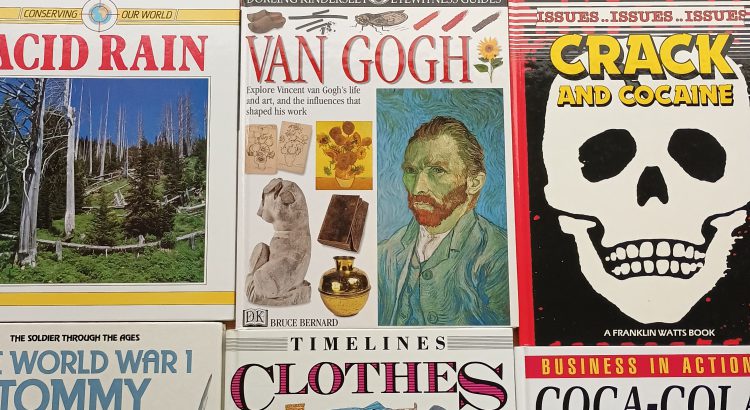Legal deposit legislation means that most UK and Irish publications are in our collections. As a consequence we have items you might not expect to find in a reference library such as car and other repair manuals and Mills and Boon romances. If you need information on how to build a shed, knit a jumper, pass your driving test or want to discover how Mills and Boon books have changed over the decades we are the place to visit.
One category of books you might not expect us to have is illustrated reference and factual books for children, but we have thousands in the collection. These are the A4 sized books on subjects such as dinosaurs, the environment and fashion through the decades that you likely remember from the school classroom or library. In around thirty or so pages they give you the key facts on a subject via a short text and copious illustrations.
To clearly explain a subject as complex as for example World War 1 in just over thirty pages you have to be something of an expert. The authors of these books are often teachers with decades of experience in a subject or acknowledged experts such as astronomer Heather Couper who wrote over forty science books aimed at a young audience. That means that while these are ideal introductions to a subject for children they are good primers for an adult audience.
So before looking at one of the many 1000 page books on World War 1 in the collections it might be helpful to read “The World War 1 Tommy” by Martin Windrow published by Franklin Watts in 1986. It gives you a very good idea of what it was like to be a soldier in World War 1 and has a detailed illustration of a soldier’s uniform and kit as well as a timeline and glossary. “The Rise of Women” by Betty Williams published by Batsford in 1994 gives an overview of how the position of women has changed in British society from Victorian times to the permissive society in just 48 pages. The book has pocket biographies of key figures from Millicent Fawcett to Germaine Greer and a well chosen list of suggested further reading.
These books are often small masterpieces of concision. It is arguably easier to write several hundred pages on a complex subject than to sum it all up in just over thirty pages. They can be the ideal starting point for studying a subject for readers of all ages and abilities. So next time you want to get the basic facts on a subject don’t look up Wikipedia, instead send for one of these primers.
